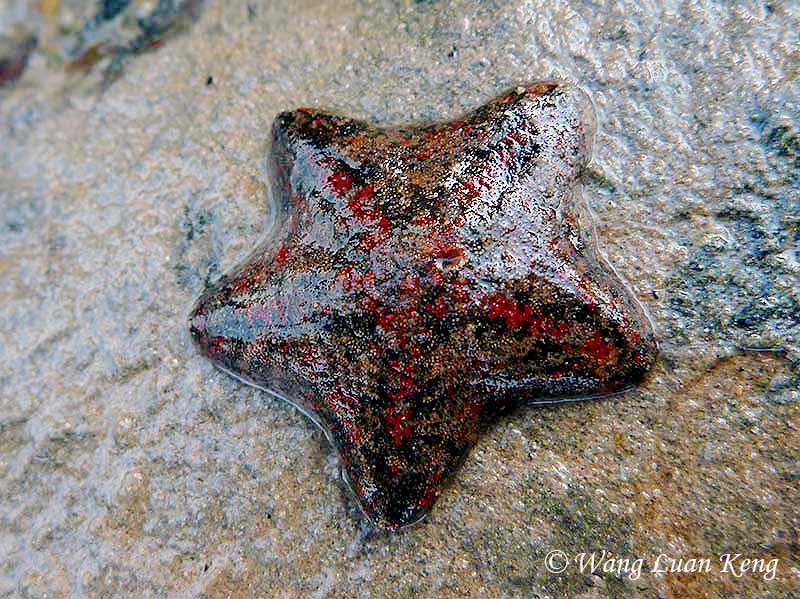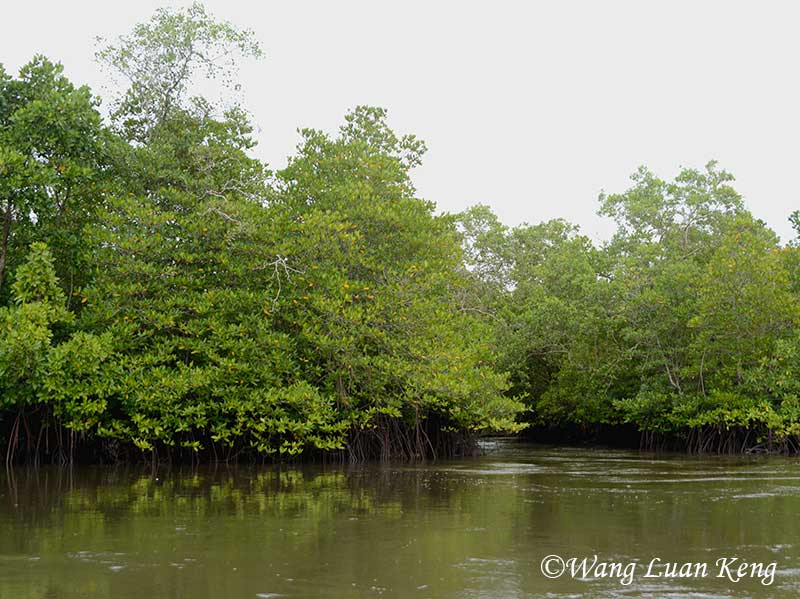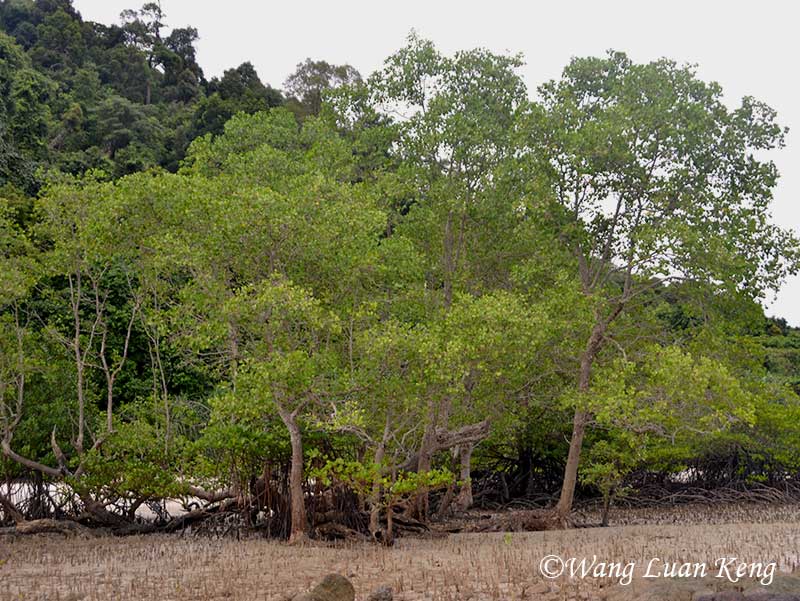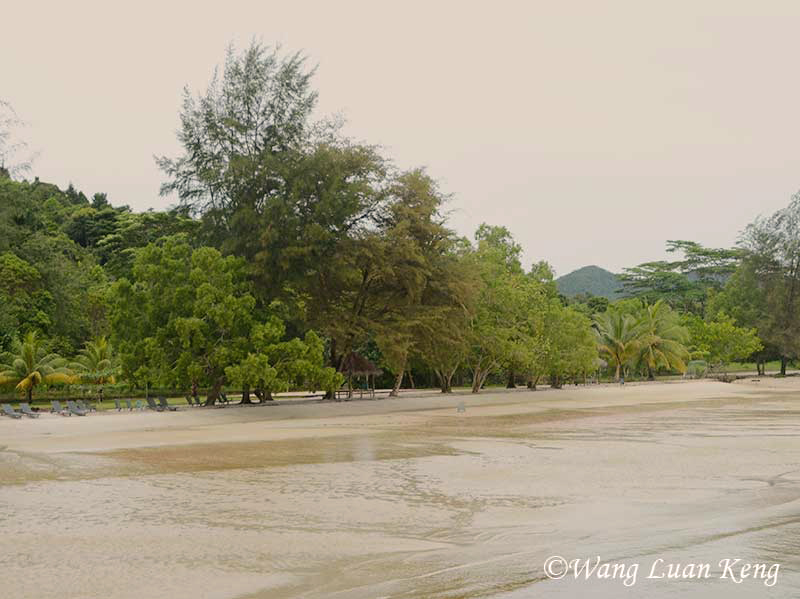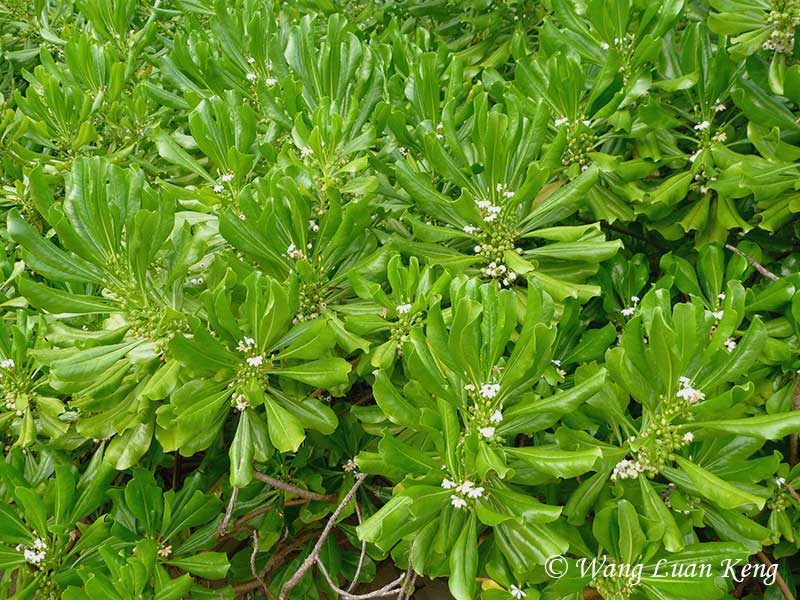The Real Residents of Telunas Beach, the Ecosystems of Telunas
This post marks the launch of a series of posts we’re calling “The Real Residents of Telunas Beach”. Many guests inquire about who lives at Telunas Beach. While there are no permanent human inhabitants, there are some small villages on other parts of spacious Sugi Island. The real residents of the beach are a variety of creatures and plant life that make Telunas such an interesting place. Through this series of posts, we will introduce you to the ecosystems that are found around Telunas Beach and the animal and plant varieties that they are composed of.
We’re thankful to have an expert guest and friend of Telunas, Wang Laun Keng, introduce the series.
Ecosystems at Telunas Beach
By Wang Luan Keng, The Nature Workshop, Singapore
Telunas Beach, situated at Sugi Island, part of the Riau Islands, is home to many ecosystems. The shore comprises both rocky and sandy habitats. As the tide recedes, meadows of seagrass are partially exposed. Mature stands of mangrove forests and coastal forests cover the coastline of the island. As one moves inland, the habitat becomes drier, allowing open country or secondary forests to establish.
I shall introduce three main ecosystems at Telunas Beach.
Intertidal
The rocky shore and sandy beach form the intertidal zone. This is the area which is submerged during high tide and exposed during low tide. Marine organisms living in the intertidal area are challenged by extreme environmental conditions. High tides bring in aquatic predators. During low tides, most parts of the intertidal area are exposed to the sun—organisms are faced with dangers from aerial and terrestrial predators as well as desiccation. Intertidal organisms have developed various strategies to cope with these challenges. Those that are mobile will run and find shelter in shadier areas, such as under rocks, or in burrows which they dig. Slow-moving or soft-bodied animals may protect themselves with a thick shell or are masters of camouflage. Some are brightly-coloured or have striking patterns to warn predators of their venom. Others develop defensive mechanisms, such as sharp spines, teeth or claws. Some animals exhibit behavioural adaptations and move in troops, thus seeking safety in numbers. Some sessile animals are able to tolerate the high temperatures.
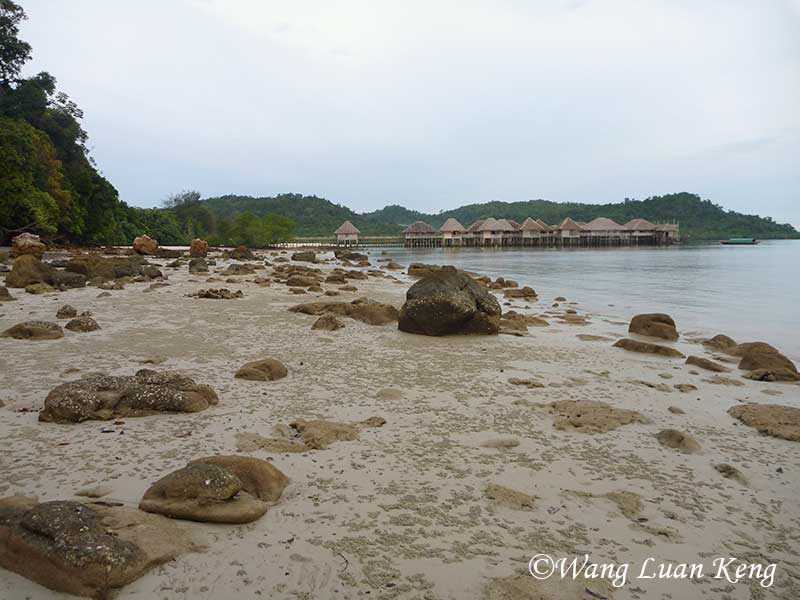
Sandy and rocky habitats of the intertidal area, with the chalets of Telunas Beach Resort in the background.
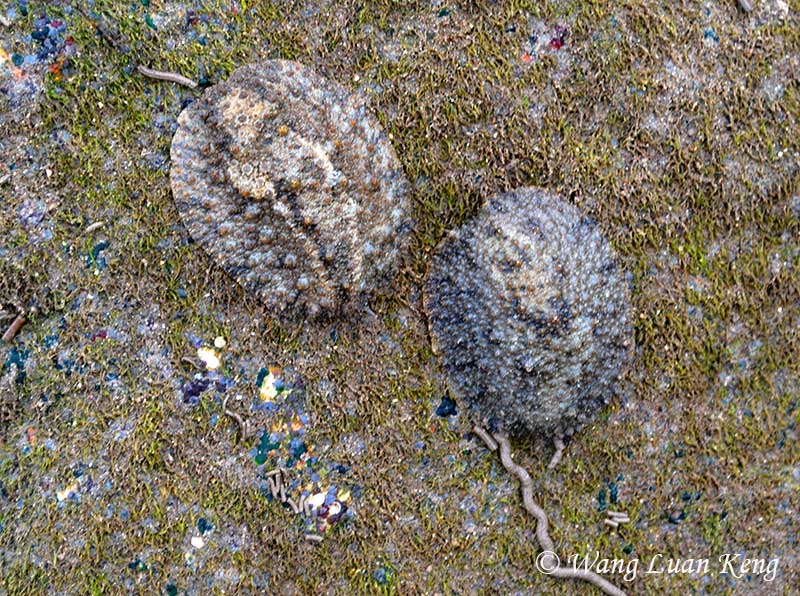
The Onch Slug (family Onchidiidae) is well camouflaged against the rocks which they graze algae from.
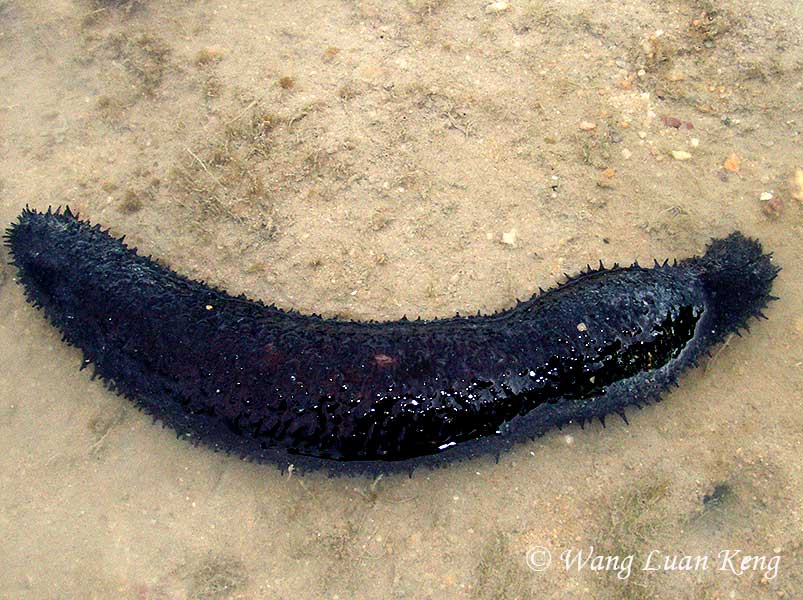
The Black Sea Cucumber (Holothuria leucospilota) hides under rocks. When threatened, it secretes white sticky threadlike substance to repel potential predators.
Mangrove Forests
The mangrove forest is situated between land and sea. Organisms living in this special habitat have to cope with daily fluctuations in salinity and temperatures with the rising and ebbing of the tides, as well as low oxygen levels in the soft and unstable substrate. Special adaptations allow a small group of plants to live in the mangrove forests. Mangrove plants have aerial roots to cope with living in unstable, water-logged and oxygen-poor muddy substrate. To deal with the salt in the water, some mangrove plants are able to prevent salt from entering the roots or have the ability to ‘sweat’ out the salt through the leaves.
Coastal Forests
Fringing the coastline is a group of plants that have adapted the tough conditions by the sea. These plants tolerate strong winds conditions, high temperatures and salty sea sprays.
They adapt to the harsh environment by developing thick and leathery leaves to reduce water loss.
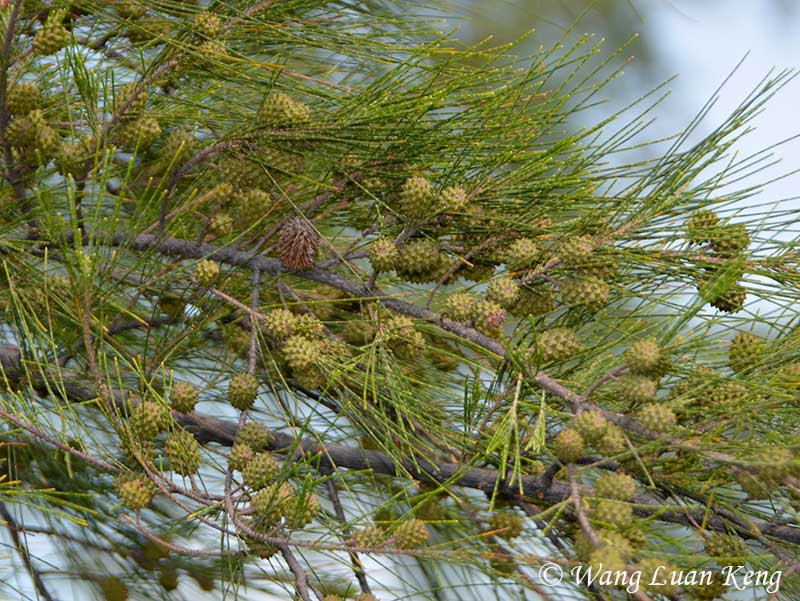
A pioneer species of the coastal forest, the Rhu Tree (Causarurina equisetifolia) has needle-like leaves to minimize water loss. The cone-like fruits are often found littered on the beach.

